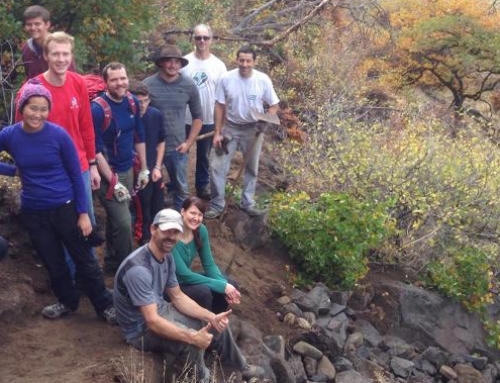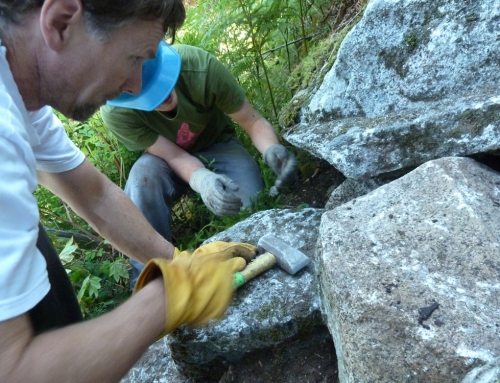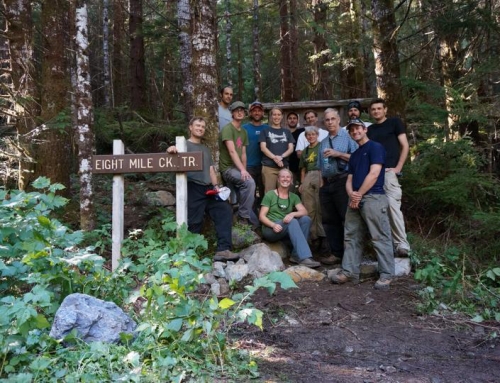Project Description

The West Ridge of Forbidden Peak is one of the most popular alpine climbs in the State – for good reason. Photo from cascadeclimbers.com.
Recent events in the North Cascades National Park raise questions regarding climbing management that bring some of the challenges regarding climbing, recreation management, public safety, and resource management concerns into sharp focus.
Sadly, public controversy has gotten in the way of a balanced consideration of the issues at stake. This matter arose because a climber installed a bolted rappel station in hopes that it would address safety and party management concerns on the Park’s most popular climb: the west ridge of Forbidden Peak. The Park Service felt compelled to remove it, and some climbers called foul. The Park Service then announced a blanket ban on bolts throughout the Park. Meanwhile, a deadly rock-fall accident during a descent of this route brought alarming attention to these issues, distorting the conversation.
The Washington Climbers Coalition hopes that all parties will take this opportunity to address the broader concerns raised by recent events. We urge further consideration of issues related to climbing management in light of concern for public access, public safety, and resource protection.
The Mountain
Forbidden Peak is a spectacular climbing destination: it is a pointed granite matterhorn rising above glacier ice and primeval forest. A technically easy but off-the-charts exciting route leads to the top: the West Ridge. The route is featured in the book Fifty Classic Climbs of North Americaand visitors travel from all over the nation to climb it.
Climbing Management
The National Park Service has a duty to provide public access in National Parks. They must also manage these public lands for resource protection and public safety. We recognize all the work that the Park Service has done to support climbing access over the years, and we commend them for working with climbers and other stakeholder groups on many issues of concern in the past.
Why the Bolts?
The traditional descent of Forbidden Peak has presented challenges in terms of party management and safety. A climber sought to address these issues by installing a bolted rappel station in 2012.
Why Were They Removed?
The Park Service removed the new rappel station and one lower down, claiming the anchors were in violation of Federal law. Subsequently, they announced a policy that no bolts could be allowed in the designated wilderness within the Park (virtually the entire park is designated).
Climbing History
The North Cascades National Park is one of America’s wildest national parks. The only road that actually penetrates the Park boundary is an old mining road: the Cascade River Road serving the trailhead for Forbidden Peak.
Climbers have been visiting the North Cascades since at least 1906, when Asahel Curtis climbed Mt. Shuksan. Climbers continue to establish new routes on peaks in the Park with some stunning achievements in recent years.
Bolts and Fixed Anchors in the Park
Bolts are a hot-button issue and, in at least some of their communication, the North Cascades National Park has used the term “fixed anchors” to refer to bolts alone. However, “fixed anchors” are genearlly thought to include slings or cord and pitons in addition to bolts. When left in place, all of these are called “fixed anchors.” Such anchors are necessary for a safe descent from many peaks.
A piton was first used for a rappel station during the descent from a peak inside today’s park in 1936 but climbers rarely carry them on climbs in the park these days. Rappel slings are much more common. Loops of cord or sling material are hung on rocks or pinnacles to facilitate a descent from several of the higher peaks in the park.
Bolts have been have been used in what is now the Park since 1967 but, apart from environmental or aesthetic concerns, they are rarely used there for several practical reasons: (1) they are not necessary on the vast majority of climbs, (2) they require specialized equipment that very few climbers have or know how to use, (3) the equipment is heavy and they require a lot of work to install.
Conclusion
Recent events in the North Cascades highlight climbing anchor management issues. The North Cascades offer spectacular climbing that is in major part spectacular precisely because it is wild and rough. That is not going to change. We look forward to getting back to working with the Park Service to address issues of concern.
The Washington Climbers Coalition works to keep Washington climbing vibrant by working with climbers, land managers and property owners on climbing issues, to educate climbers about legal, environmental and resource concerns, and promoting climber stewardship of our cliffs and boulders.




